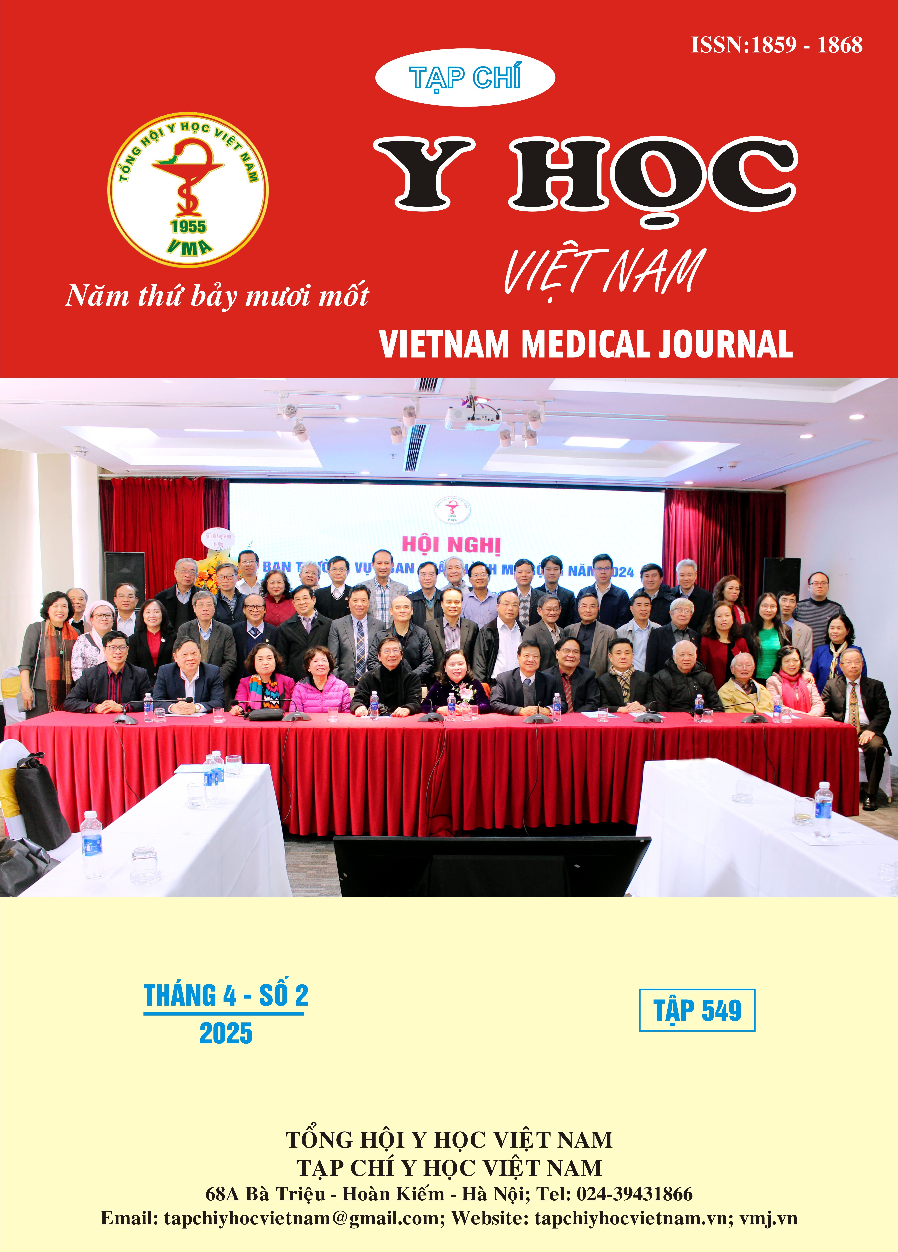MỘT SỐ YẾU TỐ LÂM SÀNG LIÊN QUAN ĐẾN MỨC ĐỘ HOẠI TỬ NGÓN TAY DO RẮN HỔ MANG CẮN TẠI BỆNH VIỆN BẠCH MAI
Nội dung chính của bài viết
Tóm tắt
Mục tiêu: Mô tả và phân tích các yếu tố lâm sàng có ý nghĩa tiên lượng mức độ hoại tử ngón tay do rắn hổ mang cắn. Đối tượng và phương pháp nghiên cứu: Mô tả cắt ngang, trên 52 bệnh nhân có tổn thương hoại tử ngón tay do rắn hổ mang cắn được điều trị tại bệnh viện Bạch Mai. Kết quả: Có 21 bệnh nhân (40,4%) thuộc nhóm tổn thương nông và 31 bệnh nhân (59,6%) thuộc nhóm tổn thương sâu. Đa số bệnh nhân là nam giới (78,8%) và nằm trong độ tuổi lao động. Không có sự khác biệt giữa hai nhóm về loài rắn hổ mang, tỉ lệ mắc bệnh mạn tính và phương pháp sơ cứu. Trung vị thời gian truyền huyết thanh kháng nọc rắn là trước 6 giờ sau khi bị cắn và trung vị thời gian can thiệp phẫu thuật là 5 ngày. Các triệu chứng tại chỗ như đỏ da và tê bì xuất hiện nhiều hơn ở nhóm tổn thương sâu (p<0,05). Nhóm tổn thương sâu có tỉ lệ hoại tử chiếm trên ½ chu vi ngón tay cao hơn gấp 18,3 lần so với nhóm tổn thương nông (p=0,01). Kết luận: Các bệnh nhân hoại tử ngón tay do rắn hổ mang cắn kèm theo các triệu chứng đỏ da, tê bì tại chỗ, đặc biệt là diện hoại tử trên ½ chu vi ngón có nguy cơ cao lộ gân xương sau khi cắt lọc tổ chức hoại tử và tiên lượng khó bảo tồn ngón tay
Chi tiết bài viết
Từ khóa
rắn hổ mang, hoại tử, ngón tay
Tài liệu tham khảo
2. Afroz A, Siddiquea BN, Chowdhury HA, Jackson TN, Watt AD. Snakebite envenoming: A systematic review and meta-analysis of global morbidity and mortality. Habib AG, ed. PLoS Negl Trop Dis. 2024;18(4):e0012080. doi:10.1371/ journal.pntd.0012080
3. Mao YC, Liu PY, Chiang LC, et al. Naja atra snakebite in Taiwan. Clin Toxicol. 2018;56(4): 273-280. doi:10.1080/15563650.2017.1366502.
4. Nguyễn Quốc Mạnh. Kết quả điều trị phẫu thuật tạo hình tổn thương bàn tay do rắn độc cắn. Luận văn thạc sỹ y học. 2022.
5. Lai CS, Liu PY, Lee CH, et al. The development of surgical risk score and evaluation of necrotizing soft tissue infection in 161 Naja atra envenomed patients. Hardcastle TC, ed. PLoS Negl Trop Dis. 2022; 16(2):e0010066. doi:10.1371/journal.pntd. 0010066
6. Ngo ND, Le QX, Pham AQ, et al. Clinical Features, Bacteriology, and Antibiotic Treatment Among Patients with Presumed Naja Bites in Vietnam. Wilderness & Environmental Medicine. 2020; 31(2): 151-156. doi:10.1016/j.wem. 2020.01.002
7. Grace TG, Omer GE. The management of upper extremity pit viper wounds. J Hand Surg Am. 1980;5(2): 168-177. doi:10.1016/s0363-5023(80) 80149-3.
8. Department of Emergency Medicine, E-Da Hospital and I-Shou University, Kaohsiung, Taiwan, Department of Emergency Medicine, Buddhist Tzu Chi General Hospital, Hualien, Taiwan, Su H, et al. Can surgical need in patients with Naja atra (Taiwan or Chinese cobra) envenomation be predicted in the emergency department? Hong Kong Med J. Published online August 12, 2016. doi:10.12809/ hkmj154739


